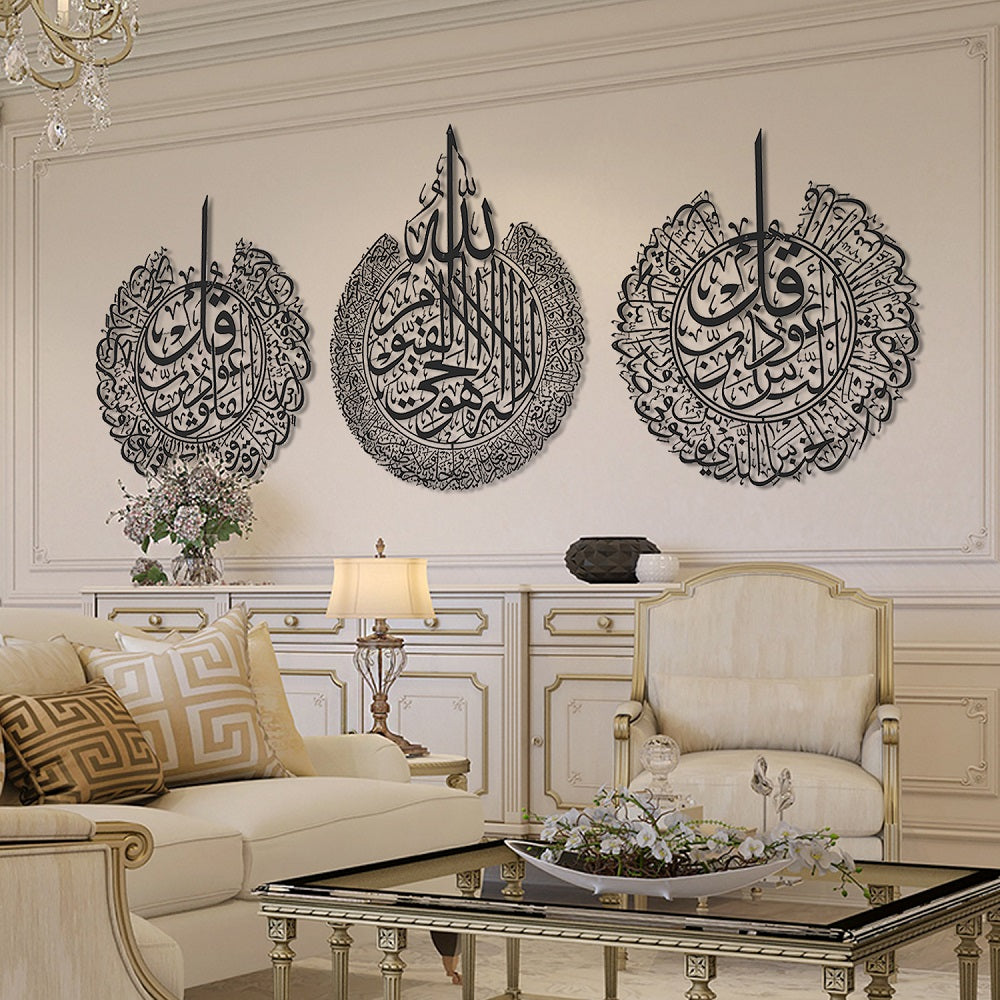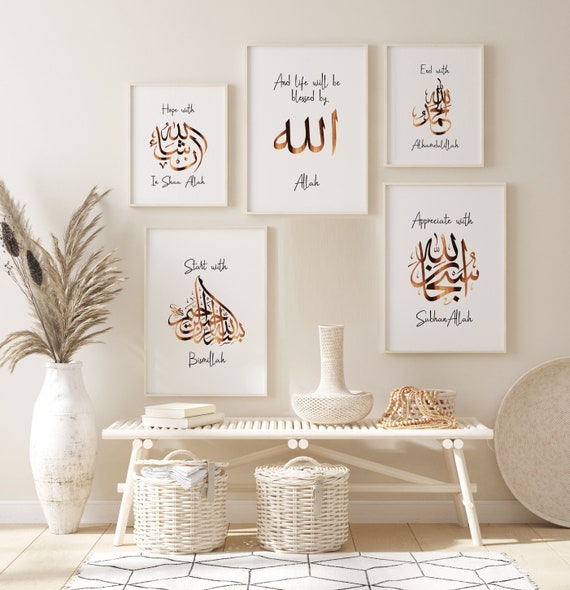Islamic art decor is a captivating blend of intricate designs, rich colors, and spiritual significance that transcends time and borders. As someone who has always been fascinated by the beauty of patterns and the stories they tell, my journey into the world of Islamic art decor has been both enlightening and fulfilling. In this comprehensive guide, we’ll delve into the history of Islamic art, explore its various styles, and provide practical tips on how to incorporate its timeless elegance into your home.
The Origins of Islamic Art
Islamic art is not only a celebration of aesthetic beauty; it also carries profound historical and cultural significance. Emerging in the 7th century, following the rise of Islam, it reflects the diverse cultures and traditions within the Islamic world.
Historical Context
The evolution of Islamic art was largely influenced by the regions it spread to, from the Middle East to North Africa, and even parts of Europe and Asia. The art form developed through various dynasties, each contributing its unique touch, leading to a rich tapestry of artistic expression.
Key Characteristics of Islamic Art
Islamic art is characterized by significant elements such as:
- Geometry: Intricate geometric patterns that symbolize the infinite nature of Allah.
- Calligraphy: Beautifully crafted Arabic script that often includes verses from the Quran.
- Floral and Vegetal Motifs: Nature-inspired designs that celebrate the beauty of creation.
Types of Islamic Art Decor
Islamic art decor encompasses a wide range of styles and mediums. Let’s explore some popular types that can enhance your living spaces.

1. Islamic Calligraphy
Calligraphy is considered one of the highest forms of artistic expression in Islam. It serves not just as a decorative element but also as a means of communicating religious texts.
Incorporating Calligraphy into Decor
Using calligraphic art pieces as wall hangings or decorative accents can create a spiritually uplifting atmosphere. Look for framed artworks that feature verses from the Quran or sayings of the Prophet Muhammad.

2. Geometric Patterns
The mesmerizing geometric patterns found in Islamic art are not just visually appealing; they also possess a deeper philosophical meaning. They reflect the mathematical precision and the belief in the unity of all creation.
Using Geometric Patterns in Home Decor
You can incorporate geometric designs through tiles, wallpaper, or fabric. Consider using patterned cushions or rugs to add depth and interest to your rooms.

3. Mosaic Art
Mosaics are a hallmark of Islamic art, often found in palaces and mosques. These stunning pieces are made by assembling small pieces of colored glass, stone, or other materials into intricate designs.
Bringing Mosaics to Your Home
For a touch of elegance, consider mosaic tabletops or decorative vases. They not only serve as beautiful focal points but also invite conversations about their artistry.

4. Textiles and Fabrics
Islamic textiles, rich in color and intricate patterns, can add warmth to any space. Fabrics such as silk, cotton, and wool are often used for curtains, cushions, and throws.
Choosing the Right Textiles
When selecting textiles, look for rich colors like deep blues, reds, and golds. These hues can evoke a sense of luxury and comfort, perfect for living areas and bedrooms.

Comparing Different Styles of Islamic Art Decor
| Style | Description | Best Use |
|---|---|---|
| Calligraphy | Artistic rendering of Arabic script, often religious in nature. | Wall decor, framed art, textiles. |
| Geometric | Complex patterns representing infinity and unity. | Tiles, wallpaper, cushions. |
| Mosaic | Intricate designs made from small colored pieces. | Tabletops, vases, murals. |
| Textiles | Richly patterned fabrics made from various materials. | Curtains, cushions, throws. |
Tips for Incorporating Islamic Art Decor into Your Home
Integrating Islamic art into your home doesn’t have to be overwhelming. Here are some actionable tips to enhance your decor while maintaining a harmonious atmosphere:

1. Start with a Focal Point
Select one significant piece, such as a large calligraphic art piece or a beautiful mosaic, to serve as the focal point in a room.
2. Balance Patterns and Colors
Combine Islamic art elements with modern designs to create a balanced look. For instance, pair geometric-patterned cushions with solid-colored furniture to avoid overwhelming the space.

3. Use Natural Light
Display art pieces in areas where they can receive natural light. This enhances their colors and showcases intricate details.
4. Create a Themed Space
If you are passionate about Islamic art, consider designing a dedicated space, such as a reading nook or meditation corner, accentuating with various Islamic decor elements.
5. Blend Cultures
Don’t hesitate to mix Islamic art with decor from other cultures. This creates a unique ambiance and reflects your personal style.
Pros and Cons of Islamic Art Decor
Pros
- Aesthetic Appeal: Offers a unique and timeless beauty.
- Rich Cultural Heritage: Each piece often carries historical and spiritual significance.
- Versatile Integration: Easily combines with various styles of interior design.
Cons
- Maintenance: Certain delicate pieces may require special care.
- Availability: Authentic pieces may be harder to find and can be expensive.
- Overwhelming Patterns: Without careful selection, patterns can clash and overwhelm a space.
FAQs about Islamic Art Decor
What materials are commonly used in Islamic art decor?
Islamic art decor often utilizes materials such as wood, ceramics, textiles, glass, and metal. Each material offers different textures and styles, enhancing the overall appeal.
How can I find authentic Islamic art pieces?
Look for reputable galleries, online marketplaces specializing in cultural art, and local craft fairs. Always verify the origin and story behind the art piece to ensure authenticity.
Can I mix Islamic art with modern decor?
Absolutely! Blending Islamic art with modern elements can create a unique and personalized style. Just ensure balance and harmony in colors and patterns.
Are there specific colors associated with Islamic art?
Islamic art often features rich, vibrant colors such as deep blues, reds, greens, and golds. These colors symbolize different aspects of spirituality and nature.
Is Islamic art suitable for all types of interior design?
Yes, Islamic art can be integrated into various styles, from traditional to modern. It’s all about finding the right pieces that resonate with your style and the existing decor.
Conclusion
Islamic art decor is a beautiful way to infuse your home with elegance, history, and cultural significance. By thoughtfully incorporating its elements, you can create a space that not only reflects your personality but also offers a tranquil and inspiring atmosphere. As you embark on this artistic journey, remember that each piece tells a story and contributes to the overall beauty of your living space.